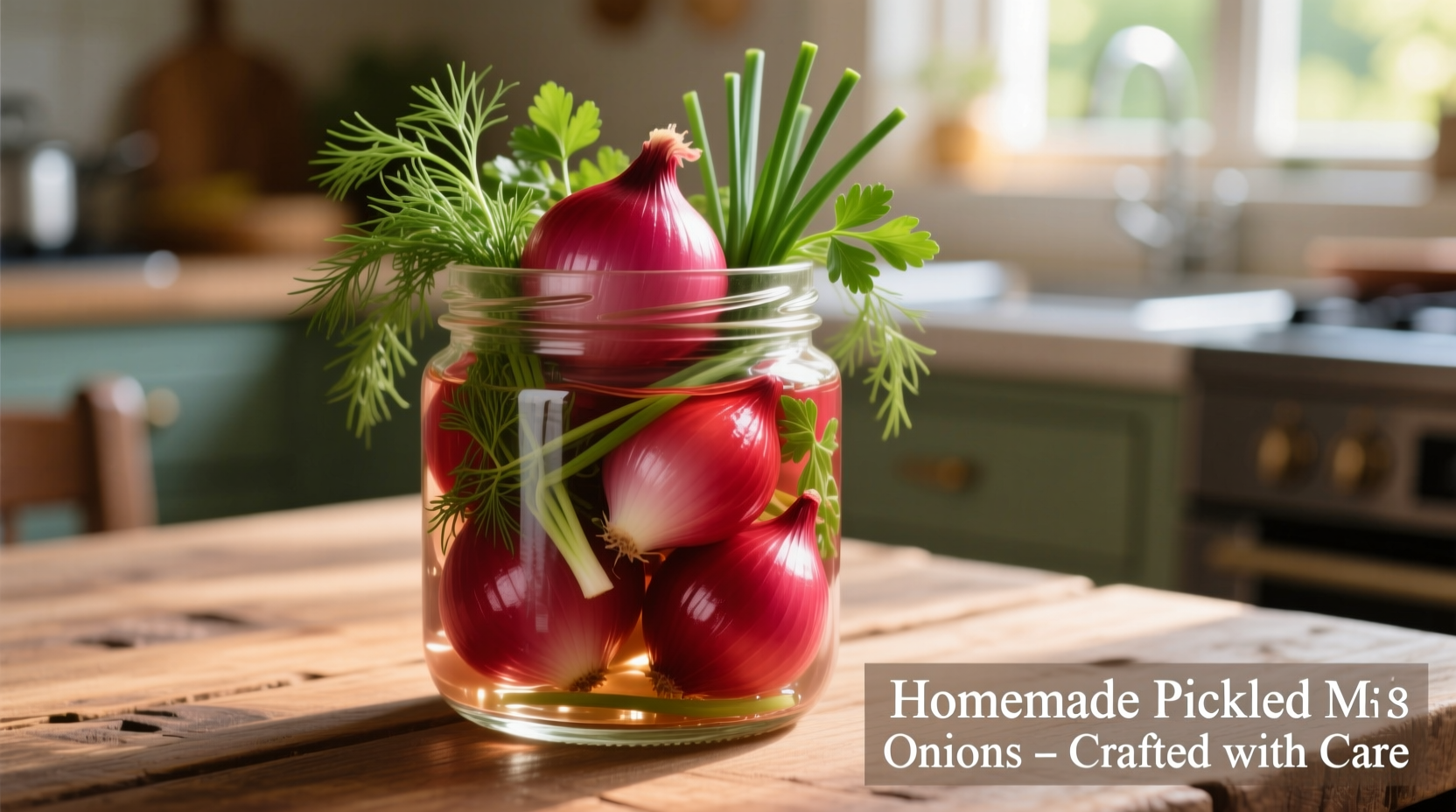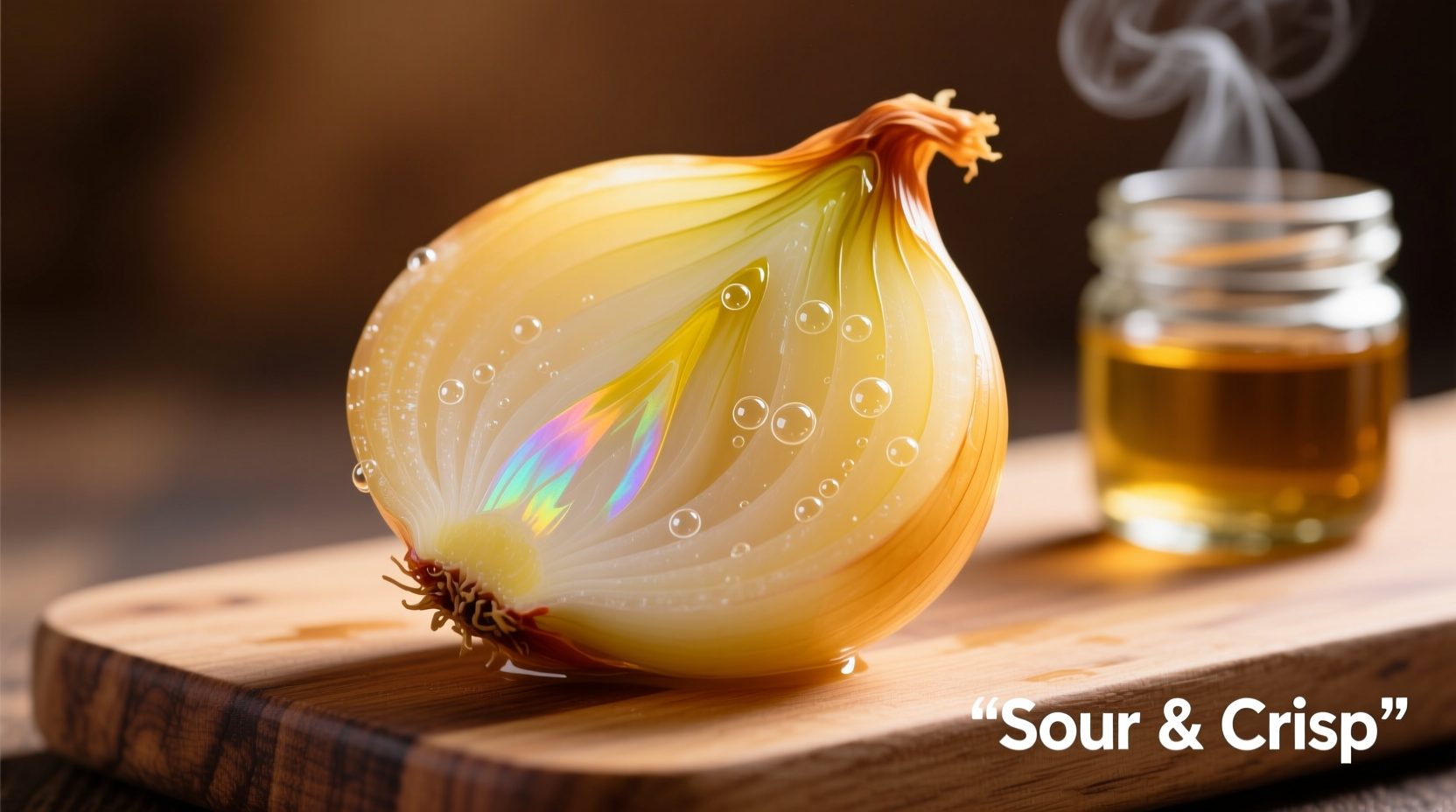Discover how this simple preservation technique can elevate your everyday cooking with minimal effort. Whether you're a beginner home cook or an experienced chef, mastering pickled onions unlocks a world of flavor possibilities that go far beyond the standard burger topping.
The Science Behind Perfectly Pickled Onions
Understanding the chemistry of pickling explains why onions respond so exceptionally well to this preservation method. When onions meet acidic brine, a remarkable transformation occurs. The vinegar's acetic acid penetrates the onion cells, breaking down sulfur compounds that cause harsh raw flavors while preserving the crisp texture through osmosis.
| Time Period | Pickling Method Evolution | Cultural Significance |
|---|---|---|
| 3000 BCE | Earliest evidence of vegetable preservation in vinegar brines found in Mesopotamian clay jars | Preservation technique developed for food security during dry seasons |
| 1st Century CE | Roman cookbook Apicius documents onion pickling recipes using wine vinegar | Symbol of culinary sophistication among Roman elite |
| 16th Century | Vinegar-based pickling replaces fermentation methods as distillation techniques improve | British sailors use pickled onions to prevent scurvy during long voyages |
| 21st Century | Modern quick-pickling techniques make the process accessible to home cooks | Featured in Bon Appétit's "100 Essential Recipes" list |
This historical evolution shows how pickled onions transitioned from a necessary preservation technique to a celebrated culinary element. According to the USDA's Food Safety and Inspection Service, proper acidification (minimum pH 4.6) not only preserves but also enhances flavor development through controlled enzymatic reactions.
Three Foolproof Methods for Perfect Pickled Onions
Professional chefs use different techniques depending on time constraints and desired flavor profile. Each method produces distinct results that work best in specific culinary applications.
Quick-Pickled Onions (Ready in 30 Minutes)
Ideal for immediate use, this method creates vibrantly colored onions with crisp texture and bright acidity. Combine equal parts vinegar and water with 1 tablespoon sugar and 1 teaspoon salt per cup of liquid. Bring to boil, pour over thinly sliced red onions in a heatproof container, and let cool to room temperature.
Traditional Fermented Onions (Ready in 3-7 Days)
For complex flavor development, use a salt-based brine (3-5% salt solution) and allow natural fermentation. This method produces probiotic-rich onions with nuanced sourness. The Oregon State University Extension Service confirms that properly fermented vegetables contain beneficial lactic acid bacteria that support gut health.
Flavored Variations for Culinary Creativity
Elevate your pickled onions by adding complementary flavors to the brine:
- Mexican-style: Add cumin seeds, oregano, and jalapeño slices
- Middle Eastern: Include sumac, coriander seeds, and pomegranate molasses
- Asian-inspired: Use rice vinegar with star anise, ginger, and a touch of honey

Maximizing Culinary Applications: Where Pickled Onions Shine
Understanding context boundaries ensures you use pickled onions effectively in different dishes. Their acidity cuts through rich flavors, making them perfect companions for specific food categories while potentially overwhelming others.
| Ideal Pairings | Less Effective Applications | Why It Works (or Doesn't) |
|---|---|---|
| Tacos and burritos | Creamy pasta dishes | Acidity balances rich meats; cream sauces dilute the pickled flavor |
| Charcuterie boards | Delicate fish like sole | Cuts through fatty cured meats; overwhelms subtle fish flavors |
| Grain bowls | Sweet desserts | Adds brightness to hearty grains; clashes with dessert profiles |
| Cheeseburgers | Fresh fruit salads | Complements savory elements; creates confusing flavor profile |
Storage Guidelines for Optimal Freshness
Proper storage extends your pickled onions' shelf life while maintaining quality. The FDA's Food Code recommends storing vinegar-pickled vegetables in airtight containers in the refrigerator for up to 3 weeks for quick-pickled varieties and up to 6 months for properly canned fermented versions.
Notice when your pickled onions have reached peak flavor: the sharp raw onion taste disappears completely, replaced by balanced tanginess with subtle sweetness. The color should remain vibrant (especially for red onions), and the texture should stay crisp rather than becoming mushy.
Common Mistakes That Ruin Pickled Onions
Avoid these frequent errors that compromise quality:
- Using insufficient acid: Maintain proper vinegar-to-water ratio (minimum 50% vinegar) to ensure food safety and proper preservation
- Skipping the salt: Salt isn't just for flavor—it helps maintain crisp texture by strengthening pectin
- Improper slicing: Cut onions uniformly (1/8-inch thick) for even pickling; too thick and they won't absorb flavor properly
- Using reactive containers: Always use glass, ceramic, or food-grade plastic—never metal which reacts with vinegar
Professional chefs like those at James Beard Foundation-recognized restaurants often add a pinch of turmeric to maintain vibrant color or include grape leaves containing tannins that preserve crispness.
Expanding Your Pickled Onion Horizons
Once you've mastered basic pickled onions, experiment with these advanced techniques:
- Create layered flavor profiles by adding brine ingredients in stages (aromatics first, sweeteners later)
- Try different onion varieties: sweet Vidalia for milder results, shallots for delicate applications, or white onions for traditional sharpness
- Use the leftover brine as a salad dressing base or cocktail mixer
- Make "quick-fermented" versions by adding a small amount of existing pickle brine to jumpstart fermentation
Remember that pickled onions continue to develop flavor over time. While quick-pickled versions are ready in hours, their flavor complexity peaks after 3-5 days in the refrigerator as the flavors fully integrate.
Frequently Asked Questions
How long do homemade pickled onions last in the refrigerator?
Properly prepared quick-pickled onions maintain optimal quality for 3-4 weeks in the refrigerator when stored in airtight containers. Fermented versions can last 4-6 months. Always check for signs of spoilage like mold, off odors, or significant texture changes before consuming.
Can I use apple cider vinegar instead of white vinegar for pickling onions?
Yes, apple cider vinegar works well for pickled onions and adds a subtle fruity note. Use it in equal proportions to white vinegar, though note it may darken red onions slightly. Ensure it has at least 5% acidity for proper preservation, as required by USDA guidelines for safe home canning.
Why do my pickled onions become mushy?
Mushy pickled onions typically result from using onions that are too mature, slicing them too thick, or using insufficient acid in the brine. For crisp results, use fresh onions, slice uniformly to 1/8-inch thickness, maintain proper vinegar ratio (minimum 50%), and consider adding calcium chloride or grape leaves which contain tannins that preserve texture.
Do pickled onions have probiotic benefits?
Traditional fermented pickled onions (made with salt brine rather than vinegar) contain live probiotic cultures that support gut health. Quick-pickled vinegar versions don't offer significant probiotic benefits but still provide antioxidants from the onions and potential digestive benefits from the vinegar's acetic acid.
What's the best onion variety for pickling?
Red onions are most popular for pickling due to their vibrant color and balanced flavor. Shallots offer a delicate alternative, while white onions provide traditional sharpness. Sweet onions like Vidalia work well but produce milder results. For visual appeal in dishes, red onions maintain their striking purple hue through the pickling process.











 浙公网安备
33010002000092号
浙公网安备
33010002000092号 浙B2-20120091-4
浙B2-20120091-4